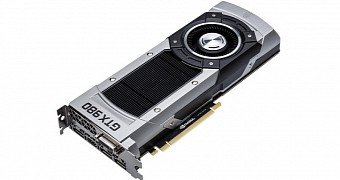The story of the Maxwell GPU micro-architecture has been an odd one, and perhaps we should have expected said story to end atypically. A quiet puffing whimper wasn't what we were expecting though.
Perhaps it's a bit too blunt to put things that way. After all, the best Maxwell GPU, the GM200, hasn't been deployed on the consumer front yet.
Also, the GM204-based GeForce GTX 980 managed to beat the GTX 780 Ti and AMD Radeon R9 290X despite not being the elite of the elite, so to speak. As in, it lacks the Ti suffix.
However, it's seeming more and more likely that NVIDIA will never get the Maxwell to the point where it was originally supposed to go.
Just days ago, we learned that both NVIDIA and Advanced Micro Devices had pushed back their respective graphics cards. Here is how the picture looks like on the former's side.
NVIDIA intends to skip straight to 16nm
This was more or less dictated by Taiwan Semiconductor Manufacturing Company, the one that actually makes NVIDIA's GPUs.
Until days ago, it was also AMD's supplier, but AMD has decided to switch full production to GlobalFoundries and try the 20nm node as originally planned.
This effectively broke off the rivalry with NVIDIA on the supply line level. It also threw all our assumptions as to both companies' roadmaps out the window.
And as if to reinforce how unreliable all other reports on the matter were, the two companies both decided to delay the release of their next generations of GPU architectures.
AMD's was easy enough to swallow, since it only pushed the GPUs from March to April 2015. NVIDIA, however, has pushed the next generation of GPUs to 2016.
That's right. NVIDIA will go straight to 16nm even if it means lagging behind AMD, fabrication node-wise, for a whole year or so.
Moreover, it has been speculated that, since NVIDIA is holding off until 2016 anyway, it will not even bother to redesign the Maxwell again. Having already turned it from a 20nm to a 28nm architecture, it could just jump straight to Pascal, the generation slated to succeed it.
On a related note, the situation could be seen as quite ironic considering that the only reason AMD had to delay its plans at all was because Apple and Qualcomm reserved most initial 20nm batches.
The implications of this
The rivalry between NVIDIA and AMD will put a lot more emphasis on driver performance optimizations and architectural design tricks than before.
Since the two companies no longer have the same fabrication baseline, they won't have the same transistor count, performance and efficiency to build upon, meaning that their R&D teams will be engaged in an even tighter competition.
This is not to say that there won't be new graphics cards from NVIDIA in 2015. Just that they will stick to the 28nm Maxwell basis for longer than initially planned. A lot longer.

 14 DAY TRIAL //
14 DAY TRIAL //